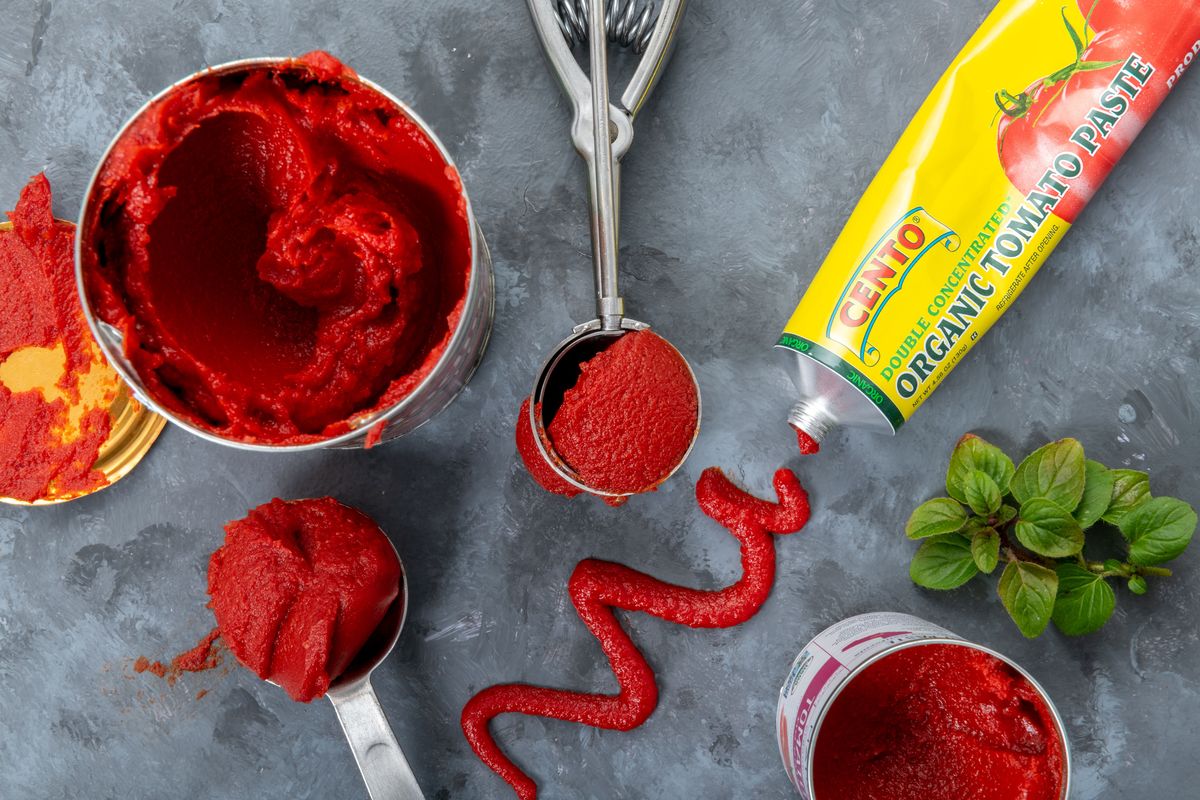Tomato paste is an umami-rich pantry powerhouse – here’s how to use it in all sorts of dishes

There are lots of ways to finish a dish with a touch of flair. A squirt of lemon juice here, a dash of pepper flakes there. But unlocking the flavor potential of a dish shouldn’t just be left to the end. If you want real depth, you have to start at the beginning.
Tomato paste is one element to consider in building that foundation. This pantry staple features many of the best aspects of tomatoes – the sweet and savory flavors, acidity – in a potent and convenient form.
Cento, one of the supermarket staple brands, shares how tomato paste is made: “After sorting, the tomatoes are ground into a mash. The mash is then cooked until a looser, brighter red and fresher tasting paste is produced. The paste is spun at high speeds to remove the pulp and seeds. Once this process is complete, the paste is placed in evaporation tanks where the water is removed.”
Depending on what brand you use, you might see the label “double-concentrated” on the packaging. As America’s Test Kitchen says, this is mostly a difference between American and Italian manufacturers. Italian manufacturers conduct the evaporation for a longer period at a lower temperature, hence the “double-concentrated” description.
American manufacturers use a higher temperature for a shorter amount of time, which is why American-made paste tends to be darker, thicker and more cooked-tasting than brighter-tasting, looser Italian brands. That being said, ATK notes that the two varieties are interchangeable in recipes, with very little noticeable differences when compared side by side in finished dishes.
One big difference you’ll find between Italian and American brands is the packaging. Italian varieties are most often sold in tubes and American in cans. For convenience, I prefer the tubes, which can be stored for as long as 45 days in the refrigerator after opening. Per ounce, they are more expensive than cans, though.
If you do purchase a can, remove any leftover paste after opening. You can transfer it to an airtight container for a few days max, but given how quickly it tends to go off, as well as the sheer quantity, it’s best to move extras to the freezer. I like to scoop the remainder into 1-tablespoon portions, freeze on a parchment- or silicone-lined baking sheet until solid and then transfer to a bag or container for long-term storage. There’s no real need to defrost. It will thaw quickly on the counter or in whatever dish you add it to.
And you will want to add it to a lot. Like anchovies, mushrooms and kombu, tomatoes are naturally high in glutamates. Glutamates are a family of chemicals that are primarily responsibly for creating umami, the sensation of a food’s savory depth that is often referred to as the fifth taste
While you might not taste tomato when you include it in a dish, you’ll still reap the benefits. As cookbook author Nik Sharma says in “The Flavor Equation,” one of our favorite cookbooks of 2020, “a few tablespoons can dramatically enhance the umami taste, with the added advantage of not introducing more liquid.”
The lack of extraneous liquid makes tomato paste a natural addition to any tomato sauce. Consider browning it in the skillet after the onions and along with quick-cooking aromatics such as garlic and red pepper flakes, for additional flavor development.
One of my favorite ways to use tomato paste is in vegetable broth. Even just a tablespoon will add depth you might otherwise get from meat-based ingredients. I find it especially earns its keep in a quick, streamlined broth I make in my Instant Pot, helping make up for the shorter time and condensed ingredient list. Ditto beans. Similarly, it’s a natural in stews and braises. Tomato paste is a useful timesaver in shorter-cooking, one-pan dishes.
Pair it with mellow and bold flavors alike. It contributes assertive power to mild proteins such as chicken and works well with beef, too. Beef is high in another group of chemicals called inosinates, which also contribute to umami, so combined, the two ingredients are a powerhouse duo.
Use it to add color and flavor to a variety of condiments, even if it’s just a dab in some plain ol’ Hellmann’s or Duke’s mayo. In “The Flavor Bible” by Karen Page and Andrew Dornenburg, chef Andrew Carmellini shares how he added a very concentrated paste to a garlic aioli for “a wonderful color, sweetness, and depth of flavor.”
For something less expected, incorporate tomato paste into batters. Maybe using up that tube or can won’t be so daunting after all.